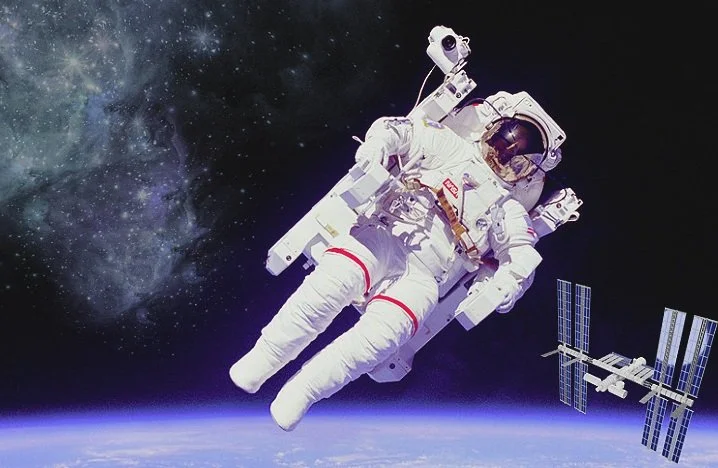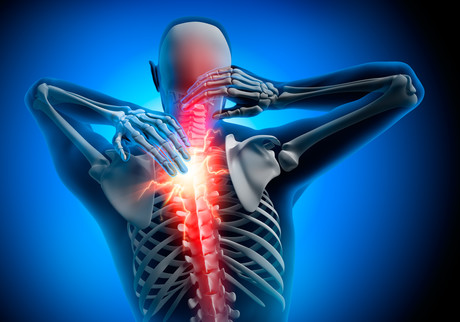Musculoskeletal injuries in space!
MobilityZ Health
Analyzing Musculoskeletal Injuries for Astronauts' Health in Space
It is worth noting that approximately 1.7 billion individuals worldwide suffer from Musculoskeletal (MSK) conditions. This staggering figure highlights the importance of recognizing how one's lifestyle can significantly impact the development and severity of MSK injuries. Engaging in repetitive movements or exerting too much force may result in short-term injuries, such as fractures, or long-term conditions, such as osteoarthritis. Consequently, it is crucial to be mindful of one's movements and take proper care of the body to avoid such injuries.
Injuries During Spaceflight:
Musculoskeletal (MSK) injuries are a common occurrence for astronauts during spaceflight, affecting their hands, shoulders, backs, and spines. A recent study utilized records from the Johnson Space Center to compile a database of in-flight MSK injuries sustained by U.S. astronauts.
Analysis of the data revealed a total of 219 in-flight MSK injuries, with the hand being the most commonly affected area, often presenting with abrasions and small lacerations. The crew's activities within the cabin, such as resistive exercise, movement between modules, and extravehicular activity (EVA) suits, were identified as the primary causes of these injuries. These findings underscore the importance of understanding the potential risks of spaceflight and implementing measures to mitigate them.
An Astronaut is executing a spacewalk beyond the spatial limitations of the International Space Station.
credit @nasa images
It has been observed that the astronauts involved in missions are prone to injuries, particularly in their hands and feet. These injuries may have been exacerbated by the rigorous training they underwent in the Neutral Buoyancy Laboratory.
The prevalence of hand and shoulder injuries among astronauts underscores the need to enhance the design and functionality of their Extravehicular Activity (EVA) suits and spacecraft. In future missions, it may be more advantageous to focus on effective fitness training and appropriate post-mission rehabilitation, rather than relying on running and competitive activities for conditioning purposes.
Space Adaptation Back Pain (SABP) is a common issue experienced by astronauts during spaceflight. It is characterized by mild to moderate pain in the lumbar region and typically arises within the first five days of the mission. The pain is often described as an aching or stiffness in the back. A majority of astronauts in the U.S. space program, approximately 53%, have reported experiencing SABP. Most cases are mild and respond well to treatment. Unfortunately, there are currently no widely accepted preventive measures for SABP, and predicting who may develop it and how is challenging.
Although operational missions do not appear to cause SABP, uncontrolled pain may impact mission performance.
Pre-Flight Training
Prior to spaceflight, astronauts undergo rigorous training in various challenging environments, such as the Weightless Environment Training Facility (WETF), Neutral Buoyancy Lab (NBL), pressure training, and vacuum chamber. Studies conducted during the early US Space Shuttle Program found a significant difference in injury rates between the mission period and outside of it, which may be attributed to the physical demands of pre-flight training.
A study was carried out between July 2002 and January 2004 to examine the effects of EVA NBL training on astronaut health. The study, which involved 86 astronauts and 770 training sessions, found that 70% of the astronauts sustained musculoskeletal injuries during pre-flight training. The hands were the most commonly affected body part, accounting for 47.16% of the injuries, followed by the shoulders (20.73%), feet (11.37%), arms (5.97%), legs (5.68%), neck (5.68%), trunk (2.84%), groin (0.28%), and head (0.28%). However, all of the injuries were generally of low severity.
Furthermore, the study revealed that 51% of the astronauts experienced suit fitting problems between July 2002 and July 2003, with many reporting issues with the upper extremities, such as the hand, elbow, and shoulder. These findings suggest that there may be a need for improvements in EVA NBL training protocols and suit design to reduce the risk of injuries and enhance astronaut safety during space missions.
Subsequent studies examining training from 1959 to 2012 have revealed a concerning trend of injuries, particularly shoulder injuries, incurred during extravehicular activity (EVA) training. This escalation in injuries is believed to be a consequence of the growing complexity of EVA over the years.
Inflight Training Injuries
In-flight training poses its own unique set of risks, with back pain being a common complaint among astronauts, occurring in 52-68% of cases, and lumbar pain developing soon after exposure to microgravity. This condition is referred to as spaceflight-associated back pain (SABP), as previously mentioned. A retrospective analysis of U.S. space program astronaut data found the overall incidence rate of SABP to be 52% for males and 58% for females, with 86% of individuals experiencing mild pain, 11% with moderate pain, and 3% with severe pain. The lumbar region was the primary focal point for the pain, followed by the thoracic and endocervical regions. Symptoms were mainly reported to occur at night (75%), with 15% experiencing pain during the day and 10% at both times.
Post-Flight Training Injuries
Another common complaint among astronauts was musculoskeletal (MSK) injuries to the hands and feet, often resulting in abrasions and small lacerations. Additionally, shoulder and hand pain due to compression was also reported and were attributed to ill-fitted gloves and suits, making it difficult for astronauts to perform EVAs.
Post-flight training presents its own set of challenges, as astronauts often experience muscle and bone loss due to deconditioning. Several MSK injuries have been reported following spaceflight, including the neck, back, shoulder, hip, knee, and ankle. Post-flight back pain, in particular, has resulted in hospitalization in some instances, attributed to the loss of spinal curvature and swelling of intervertebral discs (IVD), leading to unloading-induced spinal elongation. Symptoms of spinal elongation included lumbar flattening and increased stiffness.
Some examples of body areas where MSK Injuries occur
Recent studies have revealed that astronauts are at a greater risk of developing lumbar spine herniated nucleus pulposus (HNP) compared to the general population, with an incidence rate that is 4.3 times higher. The risk of HNP is most pronounced immediately following a spaceflight, with a staggering 35.9 times increased risk. It is noteworthy that the majority of HNP cases are typically detected within one to two years after the spaceflight.
Surprisingly, the most commonly linked activities to post-flight injuries in astronauts were basketball and running, despite their superior physical fitness. The identification of the root causes and mechanisms of musculoskeletal (MSK) injuries in space is of paramount importance for the development and refinement of EVA suit components to minimize the risk of injuries. Further research on MSK injuries in space across diverse populations is imperative for providing tailored and effective treatments for astronauts.











